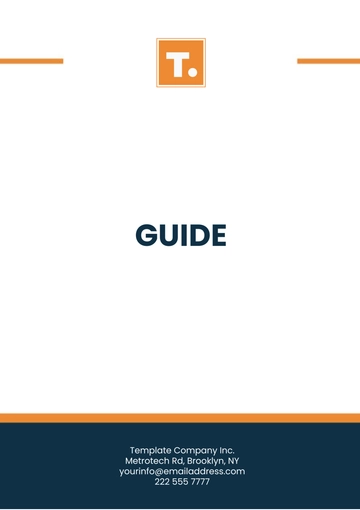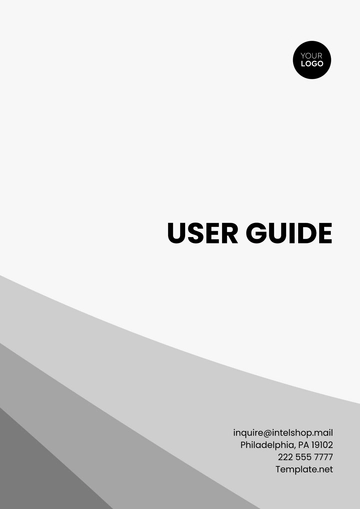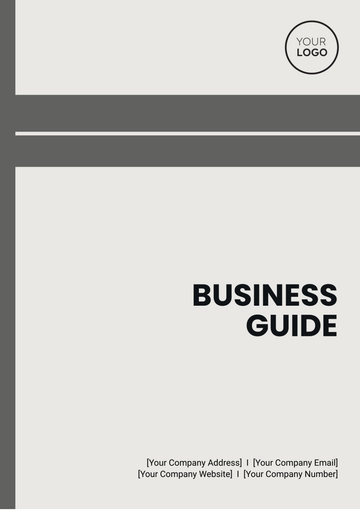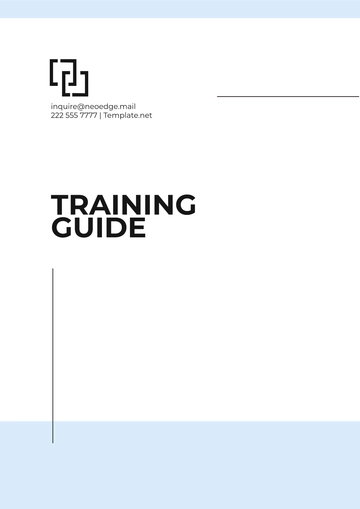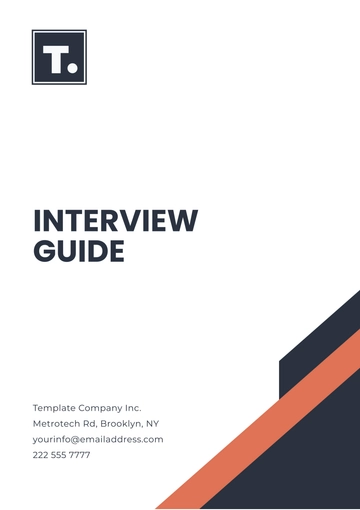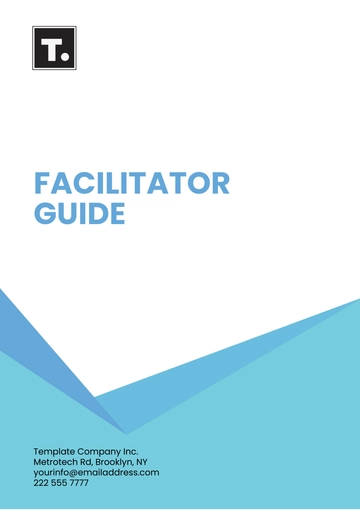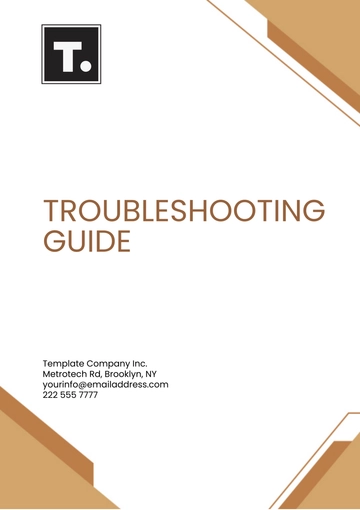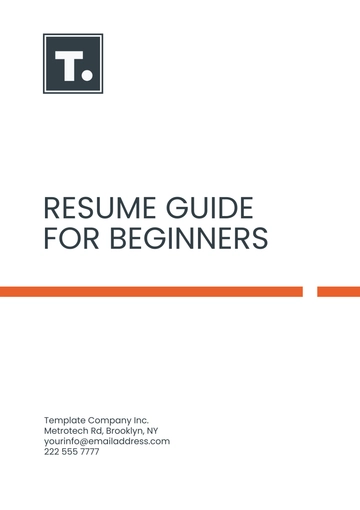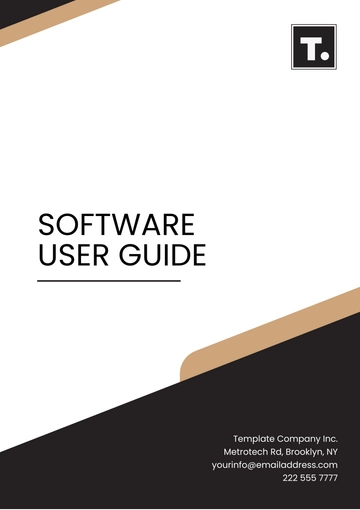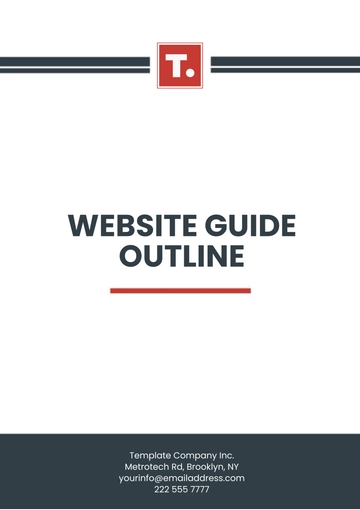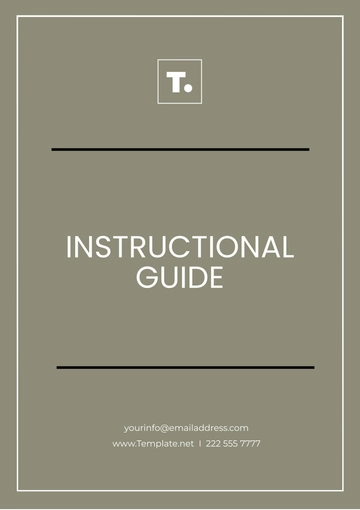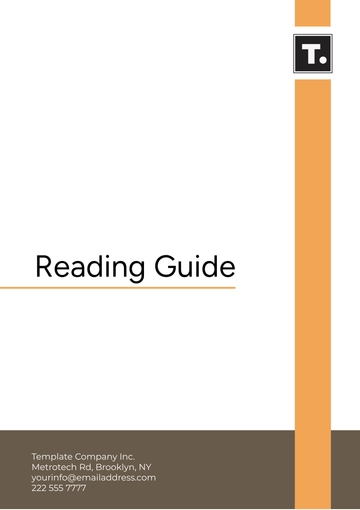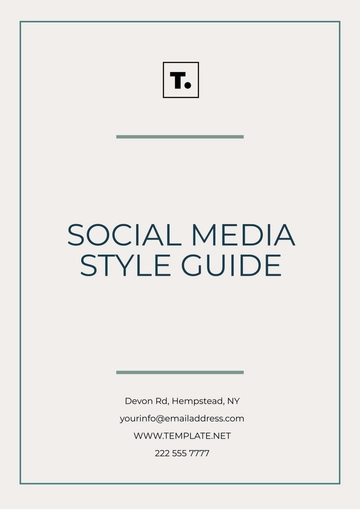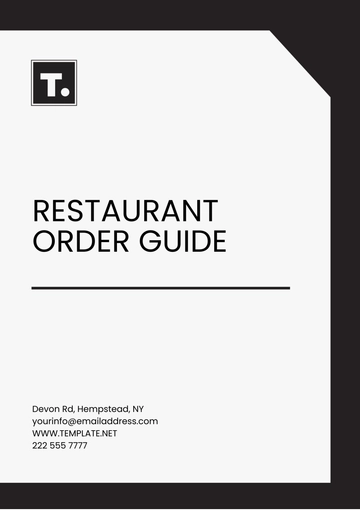Free Law Firm Remote Work Guide
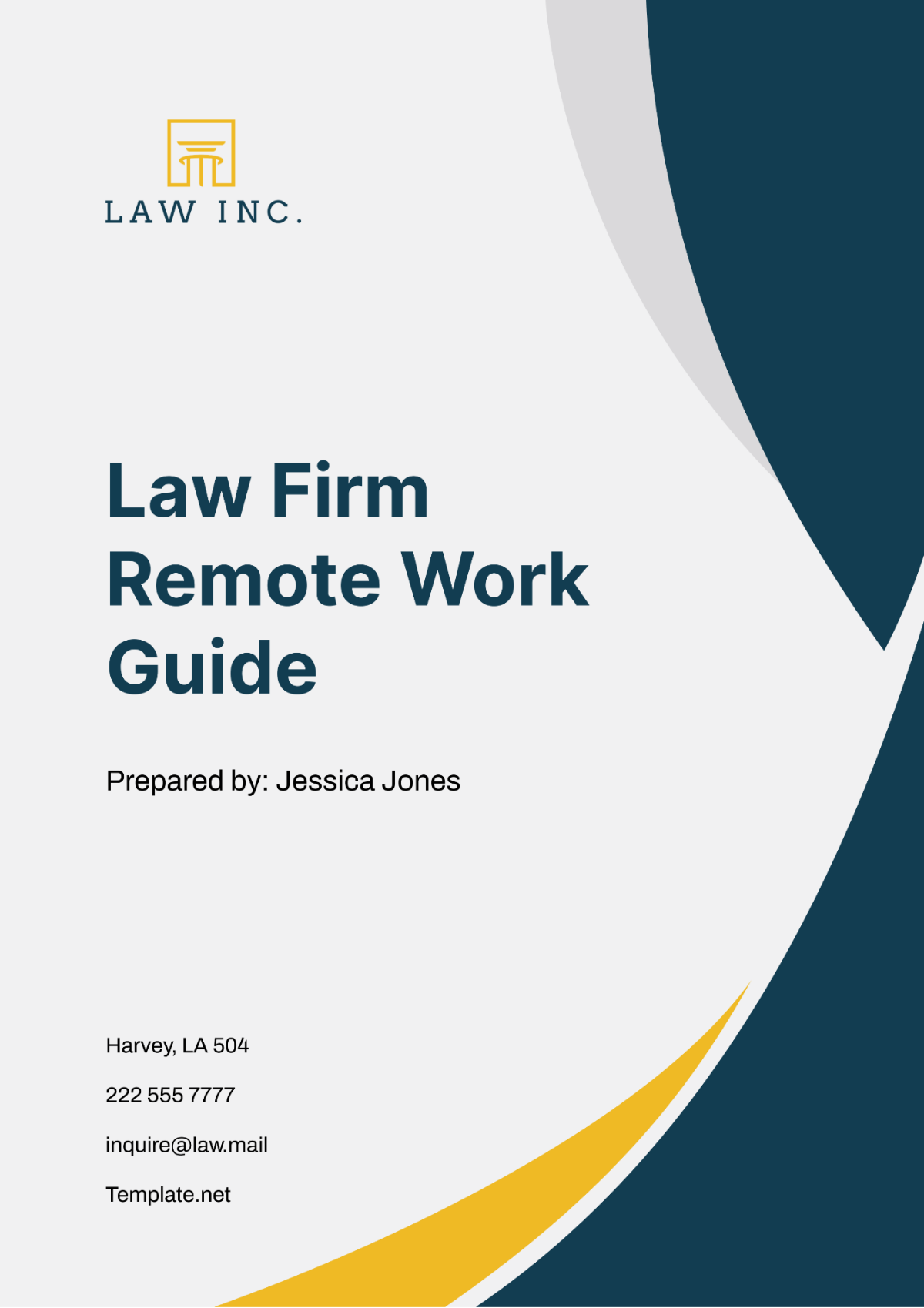
I. Introduction
A. Purpose of the Guide
Comprehensive Guidance: The primary purpose of this guide is to provide comprehensive guidance for remote work at [Your Company Name]. It aims to ensure that all employees have a clear understanding of what is expected of them when working remotely.
Promoting Efficiency: The guide also aims to promote efficiency and productivity in a remote work setting. It provides strategies and tips to help employees manage their time and tasks effectively.
Fostering Communication: Another key purpose of the guide is to foster effective communication among remote teams. It outlines the communication tools and protocols to be used by employees.
Ensuring Data Security: The guide emphasizes the importance of data security in a remote work setting. It provides guidelines to help employees protect sensitive firm and client data.
Supporting Employee Well-being: Lastly, the guide aims to support the well-being of employees. It provides tips for maintaining work-life balance and managing stress in a remote work environment.
B. Scope of the Guide
Applicability: This guide applies to all employees of [Your Company Name] who are working remotely. It covers various aspects of remote work, including communication, work hours, data security, and employee well-being.
Compliance: All employees are expected to comply with the guidelines outlined in this document. Non-compliance may lead to disciplinary action.
Review and Updates: The guide will be reviewed and updated regularly to ensure it remains relevant and effective. Employees will be notified of any updates.
C. Adherence to the Guide
Understanding the Guide: Employees are expected to read and understand the guide. If there are any questions or clarifications needed, they should reach out to their supervisor or the HR department.
Implementing the Guidelines: Employees should implement the guidelines in their daily work routine. This includes using the recommended communication tools, following the suggested work hours, and adhering to the data security measures.
Providing Feedback: Employees are encouraged to provide feedback on the guide. Their input can help improve the guide and make it more effective.
II. Communication
A. Communication Tools
Effective communication is crucial in a remote work setup. At [Your Company Name], we use a variety of communication tools to facilitate smooth and efficient communication among our team members. The following table provides an overview of the communication tools we use, the type of communication they are used for, and their frequency of use:
Tool | Type of Communication | Frequency |
|---|---|---|
Formal communication, Updates, and Announcements | Daily | |
Video Conferencing | Meetings, Discussions, and Presentations | As needed |
Instant Messaging | Quick queries and Informal communication | Throughout the work day |
Collaboration Tools | Project management and Team collaboration | As needed |
File Sharing Tools | Sharing documents and files | As needed |
The choice of communication tool depends on the nature and purpose of the communication. By using the right tool for the right purpose, we can ensure effective and efficient communication. It’s important for all employees to be proficient in these tools and use them appropriately.
Email: Email is our primary tool for formal communication at [Your Company Name]. It is used for sending updates, making announcements, and communicating information that needs to be documented. Employees are expected to check their email regularly and respond in a timely manner during work hours.
Video Conferencing: Video conferencing tools are used for meetings, discussions, and presentations. They provide a platform for face-to-face communication and collaboration, which is especially important in a remote work setup. These meetings are typically scheduled during work hours and employees are expected to attend them.
Instant Messaging: Instant messaging tools are used for quick queries and informal communication. They allow for real-time communication and can help in resolving issues quickly and efficiently. While these tools can be used throughout the day, employees should respect others’ time and avoid sending non-urgent messages outside of work hours.
Collaboration Tools: Collaboration tools are used for project management and team collaboration. They provide a platform for organizing tasks, tracking progress, and collaborating on projects. Employees should use these tools during work hours to coordinate with their team members and stay updated on the project status.
File Sharing Tools: File sharing tools are used to share documents and files. They make it easy to share large files and collaborate on documents. Employees should use these tools responsibly and ensure they follow the data security guidelines when sharing files.
While these tools facilitate communication, it’s equally important to follow good communication practices. Good communication practices can help in preventing misunderstandings, ensuring everyone is on the same page, and maintaining a positive work environment.
B. Communication Etiquette
Professionalism: Even in a remote work setting, employees should maintain professionalism in their communication. This includes using appropriate language, being respectful to others, and avoiding personal comments.
Responsiveness: Employees should respond to messages and emails in a timely manner. If a message requires a longer response time, they should acknowledge the message and provide a timeframe for their response.
Clarity: Communication should be clear and concise. Employees should avoid jargon and ensure their message is easily understood.
Respect for Time Zones: If employees are working across different time zones, they should respect the working hours of their colleagues and avoid sending messages outside of these hours unless necessary.
Confidentiality: Employees should maintain confidentiality in their communication. They should not share sensitive information without proper authorization.
C. Regular Check-ins
Daily Check-ins: Employees should have daily check-ins with their team. This helps keep everyone updated on the progress of work and any issues or challenges.
Weekly Meetings: There should be weekly team meetings to discuss the overall progress, upcoming tasks, and any concerns or issues. These meetings also provide an opportunity for team bonding.
One-on-One Meetings: Supervisors should have regular one-on-one meetings with their team members. This provides an opportunity for feedback, guidance, and addressing any individual concerns.
Client Meetings: If employees are working with clients, they should have regular meetings with them to update them on the progress and discuss any issues or requirements.
Performance Reviews: There should be regular performance reviews to provide feedback to employees and discuss their performance and growth.
III. Work Hours
A. Standard Work Hours
Core Business Hours: While we offer flexibility in work hours, we expect employees to be available during core business hours for meetings and collaboration.
Flexibility: Employees have the flexibility to choose their work hours outside of the core business hours. However, they should ensure they are completing their tasks and meeting their deadlines.
Overtime: If employees need to work overtime, they should inform their supervisor and get approval. Overtime should be an exception rather than a norm.
Time Tracking: Employees should track their work hours using the time tracking tool provided by the firm. This helps in monitoring work hours and ensuring compliance with labor laws.
Breaks: Employees should take regular breaks during their work hours. This helps prevent burnout and maintain productivity.
B. Breaks and Time Management
Scheduled Breaks: Employees should schedule regular breaks during their work hours. This could be a short break for a coffee or a longer break for lunch.
Time Management: Employees should manage their time effectively. They should prioritize their tasks and avoid multitasking.
Avoiding Distractions: Working remotely can come with its own set of distractions. Employees should create a conducive work environment and use techniques like the Pomodoro technique to stay focused.
Workload Management: Employees should not overburden themselves with work. If they are feeling overwhelmed, they should discuss it with their supervisor and find a solution.
Rest and Relaxation: Employees should ensure they are getting enough rest and relaxation. They should disconnect from work after their work hours and engage in activities they enjoy.
C. Respect for Personal Time
Work-Life Balance: Employees should maintain a healthy work-life balance. They should set boundaries and avoid working outside of their work hours.
Respecting Others’ Time: Employees should respect the personal time of their colleagues. They should avoid sending non-urgent communications outside of standard work hours.
Time Off: Employees should take time off when needed. They should inform their supervisor in advance and ensure their tasks are covered during their absence.
Personal Commitments: Employees should balance their work commitments with their personal commitments. If they need flexibility for personal reasons, they should discuss it with their supervisor.
Well-being: Employees should prioritize their well-being. They should take care of their physical and mental health and seek support if needed.
IV. Data Security
A. Secure Network
VPN: Employees should use a Virtual Private Network (VPN) to access firm resources. This ensures a secure connection and protects data from potential threats.
Firewall and Antivirus: Employees should have a firewall and antivirus software installed on their devices. These provide a layer of protection against malware and cyber threats.
Software Updates: Employees should regularly update their software. Updates often include security patches that protect against known vulnerabilities.
Secure Wi-Fi: Employees should use a secure Wi-Fi network for their work. Public Wi-Fi networks are often unsecure and can expose data to potential threats.
Password Protection: Employees should protect their devices and accounts with strong, unique passwords. They should also enable two-factor authentication where available.
B. Confidentiality
Client Confidentiality: Employees should maintain the confidentiality of client information. They should not discuss client matters in public or with unauthorized individuals.
Data Encryption: Sensitive data should be encrypted when stored or transmitted. This prevents unauthorized access to the data.
Privacy Settings: Employees should check the privacy settings of their devices and applications. They should limit the sharing of personal data and restrict access to their devices.
Document Disposal: Employees should dispose of sensitive documents securely. Digital files should be permanently deleted and physical documents should be shredded.
Reporting Breaches: Employees should report any suspected data breaches immediately. Quick action can limit the damage and prevent further breaches.
C. Reporting Security Incidents
Immediate Reporting: Any suspected security incidents or breaches should be reported immediately to the IT department. This includes lost or stolen devices, suspicious emails, and unauthorized access to accounts.
Incident Details: When reporting an incident, employees should provide as much detail as possible. This can help the IT department in investigating the incident and taking appropriate action.
Cooperation: Employees should cooperate with the IT department during the investigation. They should follow any instructions given and provide any additional information required.
Learning from Incidents: After an incident, employees should learn from the experience and take steps to prevent similar incidents in the future. This may include additional training or changes in procedures.
Continuous Vigilance: Employees should be continuously vigilant for any potential security threats. They should stay updated on the latest cyber threats and follow best practices for data security.
V. Employee Well-being
A. Work-Life Balance
Setting Boundaries: Employees should set clear boundaries between their work and personal life. This includes having a dedicated workspace at home and specific work hours. This separation helps to maintain a healthy work-life balance and ensures that employees can fully focus on their work during work hours and fully relax during their personal time.
Taking Breaks: Regular breaks are essential during work hours. Employees should take short breaks to stretch, hydrate, or simply rest their eyes from the screen. Longer breaks for meals should also be taken. Regular breaks can help prevent burnout and maintain productivity.
Time Off: Employees should not hesitate to take time off when needed. Whether it’s for a vacation, a personal day, or just a break to recharge, time off can contribute to better work performance and overall well-being. Employees should communicate their plans with their supervisor in advance.
Physical Activity: Incorporating physical activity into the daily routine is important. Regular exercise can help reduce stress, improve mood, and boost energy levels. Employees can consider activities like walking, yoga, or any other form of exercise they enjoy.
Healthy Eating: Maintaining a balanced diet is important for overall health and energy levels. Employees should try to include a variety of foods in their meals and avoid excessive consumption of unhealthy snacks, especially when working from home where snacks may be easily accessible.
B. Mental Health
Stress Management: Working remotely can come with its own set of challenges which can lead to stress. Employees should use stress management techniques to cope with these challenges. This could include mindfulness exercises, deep breathing, yoga, or any other stress-relief activities that work for them.
Social Interaction: Despite working remotely, maintaining social interaction is important. Employees can do this through virtual team activities, regular check-ins with colleagues, or even virtual coffee breaks. These interactions can help prevent feelings of isolation.
Professional Help: If employees are feeling overwhelmed, anxious, or stressed, they should not hesitate to seek professional help. Our law firm provides resources for mental health support, and employees should make use of these resources when needed.
Workload Management: If employees are feeling overwhelmed with their workload, they should discuss it with their supervisor. Together, they can find ways to manage the workload more effectively, whether it’s through delegation, reprioritization of tasks, or extending deadlines.
Positive Mindset: Maintaining a positive mindset can help employees cope with the challenges of remote work. They should focus on their achievements, celebrate small wins, and maintain a positive outlook. A positive mindset can lead to increased motivation, better problem-solving skills, and improved work performance.
VI. Workspace Setup
A. Required Equipment
In the context of a law firm, having the right equipment is crucial for maintaining productivity and ensuring effective communication. The following table provides a guideline for the essential equipment required in a remote law firm setting:
Equipment | Description | Purpose |
|---|---|---|
Laptop/Computer | High-performance device with reliable internet connection | For research, document preparation, and communication |
Phone | With voicemail capability | For client calls and team communication |
Printer/Scanner | High-quality device | For printing and scanning documents |
Secure File Storage | Cloud-based or physical | For storing client files securely |
Office Supplies | Notepads, pens, etc. | For note-taking and other tasks |
Having the right equipment is not just about being able to do the work; it’s about being able to do the work effectively and efficiently. Each piece of equipment serves a specific purpose and contributes to the overall productivity and success of the attorney. Furthermore, having the right equipment can also contribute to a better work-life balance by making tasks easier and reducing the amount of time spent on administrative tasks.
Laptop/Computer: A high-performance laptop or computer with a reliable internet connection is the backbone of any remote workspace. It enables attorneys to conduct research, prepare documents, and communicate effectively with clients and team members. In a law firm, where the workload can be heavy and the tasks complex, having a device that can keep up is crucial.
Phone: A phone with voicemail capability is another essential piece of equipment. It allows attorneys to make and receive client calls, participate in teleconferences, and communicate with team members. The voicemail feature ensures that no important calls are missed when the attorney is unavailable.
Printer/Scanner: A high-quality printer/scanner is important for printing and scanning documents. While many tasks can be performed digitally, there are still occasions when physical documents are necessary. Having the ability to print and scan documents at home can save time and increase efficiency.
Secure File Storage: Secure file storage, whether cloud-based or physical, is necessary for storing client files securely. Confidentiality is paramount in legal work, and attorneys must have a way to store files that protects client information.
Office Supplies: Basic office supplies like notepads and pens are often overlooked but are essential for tasks like note-taking during calls or brainstorming sessions.
In a nutshell, setting up a remote workspace for a law firm requires careful consideration of the equipment needed. The right tools can make the difference between a productive and efficient workspace and one that causes frustration and delays.
B. Ergonomic Workspace
In the context of a law firm, setting up an ergonomic workspace is crucial for maintaining productivity and preventing work-related injuries. An ergonomic workspace is designed to support efficiency and comfort during work. The following table provides a guideline for setting up an ergonomic workspace in a remote law firm setting:
Item | Description | Importance |
|---|---|---|
Chair | Adjustable with good lumbar support | Reduces back strain |
Desk | At a comfortable height, preferably adjustable | Prevents shoulder and neck pain |
Monitor | At eye level and about an arm’s length away | Reduces eye and neck strain |
Keyboard and Mouse | Within easy reach and on the same surface | Prevents wrist strain |
Lighting | Adequate and adjustable, without causing glare | Prevents eye strain |
Understanding the importance of an ergonomic workspace is crucial for remote work, especially in a law firm setting where hours can be long and the work can be intense. A well-designed workspace can significantly improve comfort and productivity, reducing the risk of work-related injuries. It’s not just about having the right equipment, but also about using it correctly. Regular breaks are also important, as they give the body a chance to rest and reset. Remember, comfort and efficiency go hand in hand when it comes to remote work.
Chair: An adjustable chair with good lumbar support is essential to reduce back strain. It allows the user to adjust the height and the backrest angle for maximum comfort, promoting good posture. This is particularly important in a law firm setting where professionals often spend long hours sitting while working on cases.
Desk: The desk should be at a comfortable height, preferably adjustable. This prevents shoulder and neck pain and allows the user to work comfortably for extended periods. An adjustable desk also provides the flexibility to switch between sitting and standing positions, which can be beneficial for overall health and well-being.
Monitor: The monitor should be at eye level and about an arm’s length away. This reduces eye and neck strain by eliminating the need to constantly look down or up and maintaining a comfortable viewing distance. In a law firm, where professionals often have to review lengthy documents, having the monitor at the right height and distance is crucial.
Keyboard and Mouse: The keyboard and mouse should be within easy reach and on the same surface. This prevents wrist strain by allowing the user to keep their wrists straight and their arms at or below elbow level. Given the significant amount of typing involved in legal work, it’s important to have the keyboard and mouse positioned correctly to prevent repetitive strain injuries.
Lighting: Adequate and adjustable lighting, without causing glare, is important to prevent eye strain. It allows the user to adjust the light levels depending on the task and time of day. Proper lighting is especially important in a law firm setting where professionals often have to read small print and detailed documents.
C. Technical Support
IT Support: Our IT department is available to provide technical support and assist with any issues related to workspace setup.
Software Training: If employees need training on any software, they can request it from the IT department.
Equipment Maintenance: Employees should regularly maintain their equipment to ensure it is in good working condition.
Data Backup: Employees should regularly backup their data. This can prevent data loss in case of any technical issues.
Troubleshooting: If employees face any technical issues, they should report it to the IT department immediately. Quick resolution of issues can prevent work disruptions.
VII. Performance Management
A. Performance Expectations
Quality of Work: Despite the remote work setup, the quality of work should remain high. Employees should ensure their work meets the standards set by our law firm. They should strive for excellence in all their tasks and continuously aim to improve their work quality.
Productivity: Employees should manage their time effectively to maintain productivity. They should prioritize their tasks, set realistic goals, and avoid procrastination. Effective time management can lead to increased productivity and better work performance.
Communication: Effective communication is key in a remote work setup. Employees should communicate regularly with their team members and supervisors. They should provide regular updates on their work, raise any issues promptly, and actively participate in team meetings and discussions.
Professionalism: Employees should maintain professionalism in all their interactions. This includes being respectful to others, upholding the values of our law firm, and fulfilling their responsibilities diligently. Professionalism also involves being punctual for meetings, meeting deadlines, and responding to communications in a timely manner.
Continuous Learning: The legal field is constantly evolving, and employees should strive for continuous learning. They should stay updated on the latest legal developments, enhance their skills through learning opportunities, and be open to feedback and learning from others.
B. Performance Reviews
Regular Reviews: Supervisors will conduct regular performance reviews to provide feedback and discuss any issues or concerns. These reviews are a platform for open dialogue where employees can discuss their achievements, challenges, and goals.
Goal Setting: During the reviews, supervisors and employees will set goals for the next review period. These goals should be SMART - Specific, Measurable, Achievable, Relevant, and Time-bound. Goal setting provides a clear direction and helps employees focus their efforts.
Feedback: Constructive feedback is a crucial part of performance reviews. Supervisors will provide feedback on the employee’s performance, and employees should take this feedback positively and work on any areas of improvement.
Recognition: Good performance will be recognized and rewarded. Recognition can motivate employees, boost their morale, and encourage them to continue their good work.
Career Development: The reviews will also discuss the employee’s career development. Supervisors will provide guidance and support for the employee’s career growth. Employees should take this opportunity to discuss their career aspirations and seek advice.
VIII. Conclusion
In conclusion, remote work presents unique challenges and opportunities. At [Your Company Name], we are committed to making remote work a success. We believe that with clear guidelines, effective communication, and a focus on employee well-being, we can create a productive and positive remote work environment.
We understand that remote work requires a different approach to management and collaboration. We are committed to providing the necessary support and resources to our employees to help them navigate this new way of working. This includes technical support, flexible work hours, and resources for mental health support.
Finally, we believe that this guide will be a valuable resource for our employees. We encourage them to use this guide and reach out to us if they have any questions or concerns. We are confident that together, we can make remote work a rewarding and successful experience for everyone at [Your Company Name]. We look forward to the continued success and growth of our firm and our employees in this new work setup.
- 100% Customizable, free editor
- Access 1 Million+ Templates, photo’s & graphics
- Download or share as a template
- Click and replace photos, graphics, text, backgrounds
- Resize, crop, AI write & more
- Access advanced editor
Navigate the shift to remote work seamlessly with this customizable Law Firm Remote Work Guide Template provided by Template.net! This invaluable resource offers practical strategies for optimizing remote settings. With its editable format and the AI Editor Tool, you can tailor the guide to address your firm's remote work objectives!
